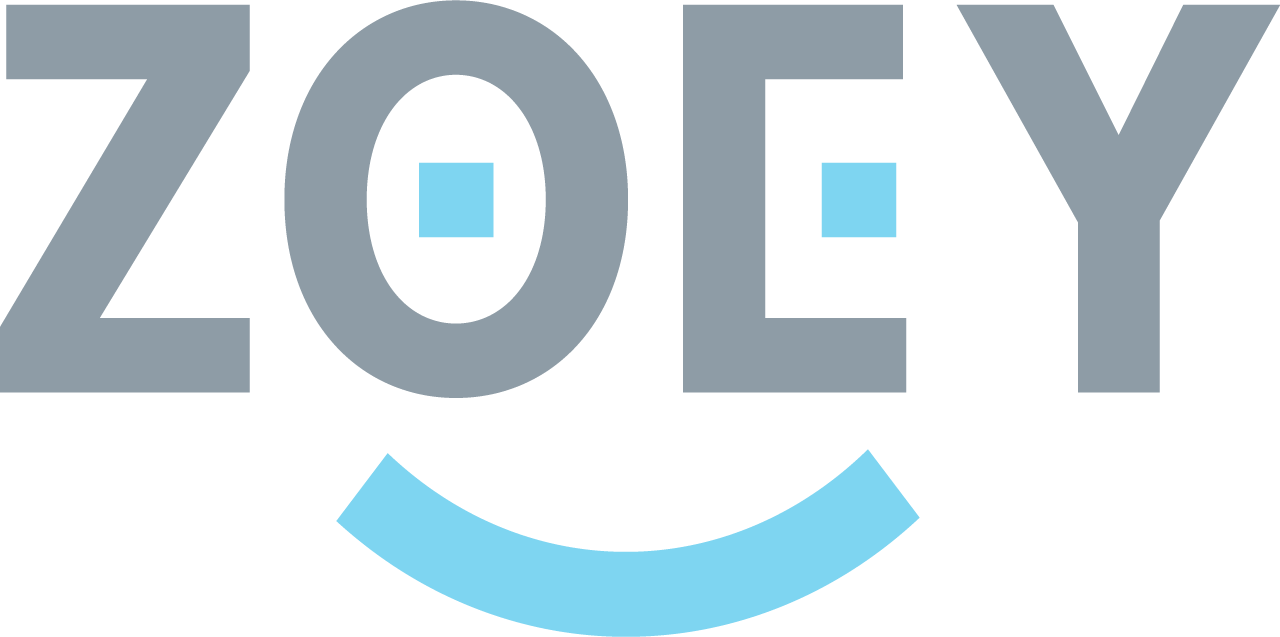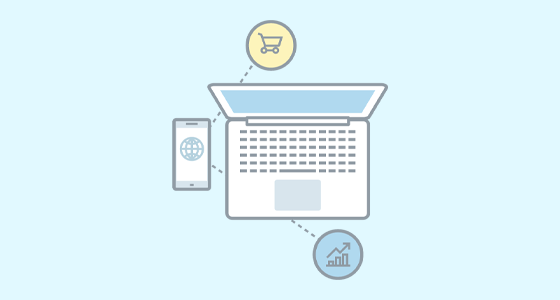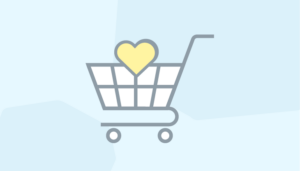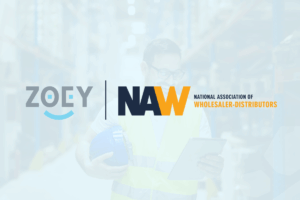
B2B Ecommerce solutions are proliferating as technology continues to evolve, bringing capabilities previously unavailable to B2B and wholesale businesses into a more attainable package. But not all solutions were made equal, and making the right decision means doing the proper research.
Today, we look at some important aspects of a B2B Ecommerce solution, and how to identify which one best fits your needs.
1. Ecommerce Software
Many approaches differ in part based on the model of the solution you’re leveraging. There’s two traditional models for Ecommerce software, and understanding how each works will help in this discussion:
- Open Source: Generally the code is completely accessible to developers to modify in any form. A free version generally exists, although premium versions that include extras or improvements also can exist. You can place the code anywhere where it can run properly (generally a server that fits the requirements stated for the software). You or someone you pay would need to keep the site up, either with implementing new features or installing upgrades or security patches. Licensing can be one-time or ongoing for both the original platform and any add-ons you select to link to the platform.
- Software as a Service (SaaS): In this format, the core platform is hosted and managed by the company you purchase the software from, meaning that you do not have to deal with those issues yourself. The software is only as accessible as the platform allows, and at least some code is generally unavailable to modifications due to how a SaaS platform works. Most platforms have APIs and ways to extend the software to allow for functionality improvements or third-party apps.
Upfront Setup Costs vs. Ongoing
The traditional line of thinking is that open source solutions cost more to setup, but since the platform is “owned” and many times doesn’t require a licensing fee to keep using (although some, like Magento’s Commerce edition, do), SaaS solutions will cost more. However, that’s not always true.
Open Source solutions generally cost more to set up. Since this type of solution is selected in part for its flexibility, customization is generally expected, and with it an upfront cost to get it. When updates and security patches come out for these solutions, it requires more time and testing to ensure that those customizations don’t conflict or break with the upgrade. That means paying developers to regularly update the site, just to keep things up to date and secure.
With SaaS, the monthly subscription fee includes the upgrades and patches. Because the SaaS company is performing updates that goes to its entire customer base, it’s able to cover them within the monthly fee, unlike open source, where each site must be managed individually.
It’s important to therefore confirm what you should expect in terms of upkeep for each type of platform, so you know the true Total Cost of Ownership for the site solution you select.
2. B2B Capabilities
Many Ecommerce solutions promise and tout B2B capabilities. However, not all B2B and wholesale solutions are created equal.
Some solutions promise B2B capabilities but cover just a small subset of what many B2B stores need. Others offer the capabilities only as an add-on or with certain editions of their software.
A major difference that can impact the quality of the solution is whether an Ecommerce solution mainly positions itself as a B2C solution or a B2B solution. B2B solutions make architectural and design decisions that focus on what B2B customers expect. That means everything from how you merchandise your products, what ways they can purchase them, what sorts of payment options they get, what sorts of pricing structures you can implement, and so on.
B2C solutions will, for instance, strike through a full price of a product to show a consumer a sale. Most B2B platforms will not use the strikethrough design, but may show an MSRP or other data on the screen for comparison. B2C solutions create ways for customers to browse; B2B solutions focus on ways to make a transaction more efficient, given the general size and volume of them.
In other situations, particularly within the SaaS ecosystem, B2B Ecommerce solutions are being sold as an added bonus of taking on other software. When the capability is not a core part of the solution you’re buying, there’s a risk that it may not receive the same attention, or get built out as fully, as a B2B or wholesale solution who is making that their primary goal. This can be doubly challenging if their core service is something you already get elsewhere, and you’re forced to decide to adopt the entire suite of capabilities to get their B2B Ecommerce solution.
Knowing what your solution is attempting to accomplish, and whether their goals align with yours, should be a key part of the conversation.
3. Website Features
When you build your website, you’re not just building for today, but you’re making a decision on where you’re staking your future for awhile. No one wants to outgrow their website in a few months or a year. So it’s important to know what of the key features you need, whether SaaS or Open Source, you can leverage within the solution you choose natively, and what has to be done with add-ons.
Native support of your core features will mean easier extensibility as you grow. An example could be pricing. If your choice supports all the different ways you handle pricing for your business (tier pricing, group pricing, promotions and discounts, etc.), it may be easier if you later wish to connect your Ecommerce to another platform, like an ERP system or a marketplace. If you rely on a third-party add-on to manage some your pricing scenarios, that add-on may or may not properly interact with those other systems, creating more work to tie things together. Over time, as you tack on more and more, it can get increasingly difficult if you have a hodge-podge of add-ons running things.
At the same time, some parts of the process make perfect sense to be an add-on. For instance, connecting to other systems, like accounting or a CRM system, is generally going to be managed by a connector or add-on. Isolated parts of the process, like generating shipping labels in bulk and updating orders, can be managed outside the Ecommerce solution without much interference on the rest of the process.
As such, it’s important to do a quick sketch internally of what pieces are supported natively, and what will be added in, and understand what limitations that may introduce later.
4. Buyer Features
An Ecommerce system needs to cover more than just internal user needs. Your buyers also need a comprehensive set of features especially tailored to the B2B Ecommerce buyer.
B2B buyers may have similar needs to B2C buyers in tracking orders or reviewing purchase history, but when it comes to building orders their workflow is quite different.
As such, your should make sure you evaluate the buyer experience and ensure your client base will be comfortable with what you’re putting forward.
5. Billing Features
Along with features that ensure your buyers are comfortable purchasing, billing features for B2B Ecommerce are a critical part of successful online sales. These features come in two forms:
- Less expensive payment types that allow for protecting margins, such as ACH, purchase orders and checks
- Invoicing that acknowledges that B2B Ecommerce transactions tends to more frequently have terms attached to them, unlike B2B Ecommerce, which requires upfront payment
Conversion rates can increase simply by the nature of offering the right payment types, and help close the gap on getting paid in a reasonable amount of time, given the average payment cycle for B2B is 34 days, with nearly half of invoices getting paid late.
6. Level of Extensibility
Of course, the above becomes a moot point if you can’t extend the platform. Knowing how closed or open a platform is will determine if you can easily extend or expand the capabilities to cover your business’s needs as you grow. Here are some key questions you can ask a solution to better get a sense of how much room you’ll have to grow:
- Does your solution of choice support add-ons or extensions?
- Can you tie into APIs to be able to send or receive data?
- Do you have a healthy ecosystem of partners?
- What are the limitations that exist for extending the platform? One major example is the possibilities of checkout modification – can checkout be modified, and/or can an add-on interact with checkout?
All of these questions can help you understand the level of depth a platform can truly achieve, beyond what you see on a feature list.
7. Product Management Offerings
The bread and butter of B2B Ecommerce catalog presentation is the ability to set up and manage products. For B2B Ecommerce, it’s less about having a browsable catalog and more about being able to customize the Ecommerce experience for various customer types. This can include:
- Catalog segmentation based on who’s viewing your site
- Pricing segmentation based on the buyer
- Tiered pricing based on volume
- Backordering capabilities
- Product alerts when pricing changes or a product returns to stock
Product management is a more complex process for B2B Ecommerce, so the solution you adopt should make handling those more complex needs as easy as possible.
8. Salesperson Support
Finally, after thinking about both the buyers and the internal team, there’s one more group you’ll need to think about: Salespeople. The ability to support salespeople through technology is critical when they’ll still be the face of your business, but they will need the ability to input orders just like your buyers. And when done successfully, you can move more customers into a single B2B Ecommerce platform, regardless of how the order is taken.
One major option is a mobile app, which allows your sales team to take orders anytime, anyplace on any device. Mobile apps don’t just improve efficiency and increase sales, but protects from information loss by ensuring all data is entered accurately the first time into your ordering solution.
See Zoey in Action
A demo is the best way to see the platform in action. Most B2B solutions, like Zoey, will give you a customized walkthrough focusing on the features you will rely on. If you haven’t received a demo of Zoey to see how we can assist your business, contact us today to learn more.






